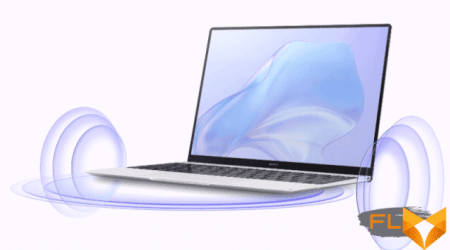In an era where global communication is increasingly essential, the need for effective and accurate conversion between tongues has never been greater. Various applications and software have emerged, each offering its unique features and capabilities to bridge the gap between different cultures and languages. This article delves into two prominent contenders in this digital arena, comparing their strengths and weaknesses.
The first contender is known for its robust algorithms and vast database, providing instant switching between numerous dialects. With an emphasis on speed and convenience, it has become a go-to solution for everyday users seeking quick assistance in understanding foreign text.
The second participant brings a more sophisticated approach to the table, leveraging advanced conversational techniques to enhance text interpretation. By focusing on context and nuance, it aims to provide not only direct translations but also meaningful interactions, tailored to the user’s needs.
As we explore the attributes of these two innovative tools, we invite you to consider which application may serve you better in your linguistic endeavors, offering clarity in this fascinating competition.
Overview of Google Translate Features
The popular online tool offers an array of functionalities designed to facilitate cross-linguistic communication and understanding. With its user-friendly interface, it caters to both casual users seeking quick translations and professionals requiring precise interpretations. Its integration into various platforms allows for seamless accessibility across devices.
One of the standout attributes of this utility is its extensive support for numerous dialects, enabling users to translate text between multiple languages effortlessly. Additionally, it harnesses machine learning algorithms to continuously improve accuracy, providing more reliable results over time. The text-to-speech function allows users to hear pronunciations, enhancing their learning experience.
Optical character recognition (OCR) capability enables users to translate text within images, making it a valuable tool for travelers and learners alike. Furthermore, the addition of contextual translations takes into account the surrounding text, which helps clarify meanings that may be ambiguous in isolation.
Collaboration features are another highlight, enabling sharing translated content easily. The tool also provides a conversational mode for real-time dialogue between speakers of different languages, further bridging communication gaps. Overall, this versatile utility serves as an essential resource for individuals and businesses navigating multilingual environments.
Capabilities of ChatGPT in Language Translation
The ongoing advancements in artificial intelligence have paved the way for innovative systems adept at converting text from one tongue to another. A notable contender in this field offers a unique blend of capabilities that transcends mere word-for-word substitutions. Such a system can grasp context, nuance, and intent, providing users with translations that resonate on a deeper level.
Contextual Understanding
One of the standout features of this advanced model is its ability to interpret the context surrounding phrases and sentences. Rather than solely focusing on literal meanings, it takes into account surrounding content, cultural references, and the overall sentiment, allowing for translations that are not only accurate but also feel natural to native speakers. This skilled comprehension is crucial in avoiding misunderstandings that often occur with more straightforward approaches.
Adaptive Learning
Moreover, this system continuously evolves by learning from interactions and feedback. This adaptability enhances its performance over time, ensuring that it stays updated with contemporary linguistic trends, colloquialisms, and emerging terminology. As a result, users benefit from a tool that remains relevant and effective, catering to their specific requirements in diverse communicative scenarios.
In conclusion, this innovative approach to converting languages showcases remarkable skills in understanding context and adapting to the ever-changing linguistic landscape. Its potential applications are vast, ranging from everyday communication to professional and academic use.
Comparative Accuracy of Both Tools
In assessing the precision of various digital linguistic tools, it is vital to consider their ability to maintain the intended meaning while effectively conveying nuances and context. Accuracy plays a pivotal role in ensuring users receive reliable translations that reflect subtleties in tone, idiomatic expressions, and grammatical structure. This section delves into the comparative precision of these prominent applications.
Evaluation Criteria
To effectively gauge the accuracy of each platform, several criteria are taken into account:
- Contextual Understanding: The ability to interpret and convey meanings based on surrounding text.
- Grammatical Correctness: Adherence to syntax and sentence structure norms in the target language.
- Idiomatic Accuracy: Proficiency in translating phrases that are culturally specific and may not have direct equivalents.
- Consistency: Delivering stable results across multiple translations of the same text.
Results of Comparison
When performing a side-by-side analysis of the outputs produced by both platforms, the following observations emerge:
- Contextual Integrity: One tool often excels in grasping the full context, resulting in more natural translations.
- Complex Sentences: The other tool demonstrates superior handling of intricate sentence structures, providing clarity even in convoluted phrases.
- Idiomatic Expressions: While both struggle occasionally, one shows a clearer tendency to maintain the original essence of colloquialisms.
These findings underline the importance of selecting the right tool for specific linguistic tasks, as each platform has distinct strengths and weaknesses that can heavily influence the outcome of the translation process.
User Experience and Interface Comparison
The effectiveness of any tool often hinges on its usability and the overall experience it offers to its users. In this segment, we will delve into the design and interactive features of two popular applications that assist with multilingual communication. Various factors contribute to how users interact with these tools, influencing satisfaction and efficiency.
When evaluating user experience, several aspects come into play:
- Ease of Use: Both platforms aim to provide a seamless interaction. A streamlined process allows users to access features without unnecessary complications.
- Interface Design: A visually appealing and intuitive layout enhances user engagement. The arrangement of buttons, menus, and options significantly impacts usability.
- Accessibility: Features should be easily accessible for users across devices and environments. Consideration for various user needs, including support for different devices, enhances overall satisfaction.
- Feedback Mechanism: Providing clear responses and options is crucial. Users appreciate prompts and confirmations that affirm their actions.
Furthermore, the interactivity of these tools plays a significant role:
- Response Time: The speed at which translations are generated can greatly affect user experience; quicker responses improve efficiency.
- Customization Options: Allowing users to adjust settings according to their preferences can elevate their interaction level. Options for voice, tone, and additional aids can enrich the experience.
- Integration with Other Tools: Compatibility with additional applications or platforms can boost usability, providing an all-in-one experience for users engaged in multilingual tasks.
Ultimately, the effectiveness of these applications in serving users’ needs depends on thoughtful design and efficient functionality. In a competitive landscape, offering a superior user experience can set one apart from the other.
Use Cases: When to Choose Which
In today’s globalized world, effective communication across different tongues is crucial. Different tools serve unique purposes, and understanding when to utilize each can significantly enhance your experience. This section will delve into specific scenarios to illustrate the optimal circumstances for employing one service over another.
Quick and Casual Conversations
When engaging in brief chats or simple dialogues, one service shines due to its speed and straightforward interface. It’s particularly useful for travelers or casual users who need to decipher phrases on the go. Immediate accessibility and the ability to handle short exchanges make it a go-to option for everyday interactions, such as ordering food or asking for directions.
Complex Discussions and Contextual Nuance
For more intricate conversations, especially those that require a deeper understanding of context, emotions, or cultural references, another option becomes advantageous. It excels in providing nuanced exchanges and text generation that resembles human-like dialogue. Using this platform is beneficial for professional settings, such as drafting emails, writing articles, or engaging in detailed discussions where subtleties matter.
Future Developments in Language Translation
The evolution of communication tools continues to advance rapidly, opening new horizons for seamless interactions across diverse cultures. As technology progresses, innovations in this field promise to enhance the accuracy and efficiency of converting text and speech between different tongues, thus facilitating more meaningful connections among individuals and communities worldwide.
Artificial Intelligence Integration
The incorporation of artificial intelligence is set to revolutionize the conversion process. Through machine learning algorithms, systems will become more adept at understanding context, idiomatic expressions, and cultural nuances. This heightened awareness will lead to translations that feel more natural and less mechanical, making them more relatable to users.
Real-Time Communication Enhancements
Future advancements will likely focus on improving instant translation capabilities during conversations. By facilitating real-time exchanges, technology will promote richer dialogues and foster deeper understanding among speakers of various dialects. This enhancement will not only alter personal interactions but will also impact international business and diplomacy, bridging gaps that once seemed insurmountable.
Q&A: Google translate vs chatgpt which is the best language translator
How does ChatGPT compare to Google Translate in terms of translation quality?
ChatGPT excels at providing context-aware and natural language translations, whereas Google Translate often focuses on more literal translations. ChatGPT, being a large language model developed by OpenAI, offers more flexibility in handling complex language structures, idioms, and slang, making it better suited for translation tasks requiring nuance and conversational tone. On the other hand, Google Translate provides faster, more straightforward translations, but may lack the depth and accuracy found in tools like ChatGPT when handling idiomatic expressions or culturally specific phrases.
Can tools like ChatGPT and Google Translate break down language barriers more effectively?
Both tools, ChatGPT and Google Translate, aim to break down language barriers by translating text from one language to another. ChatGPT, with its natural language processing capabilities, generates human-like responses that are often more conversational and adaptable. In contrast, Google Translate provides rapid translations across a wider range of languages. While Google Translate supports extensive language pairs, ChatGPT’s ability to understand context and provide better translations in terms of accuracy and tone gives it an edge in breaking down nuanced language barriers, especially for less common or idiomatic expressions.
What advantages does ChatGPT offer over traditional machine translation tools like Google Translate and DeepL?
ChatGPT offers significant advantages over traditional machine translation tools like Google Translate and DeepL by using a generative pre-trained transformer (GPT) model. This allows ChatGPT to provide more accurate translations with a better grasp of context and idiomatic language. Unlike tools like Google Translate, which rely heavily on literal translations, ChatGPT can handle complex phrasing and generate natural language outputs that resemble human conversation. This makes it particularly useful for tasks requiring idiomatic or slang interpretation, where traditional machine translation services might fall short.
Why might ChatGPT be better than Google Translate for certain language translation tasks?
ChatGPT may be better than Google Translate for tasks that require nuanced understanding, such as translating idiomatic expressions or informal language, thanks to its training data and advanced natural language processing capabilities. While Google Translate supports a wide range of languages and provides fast, literal translations, ChatGPT often delivers better translations when it comes to preserving the meaning and context of the original text. Its ability to generate human-like responses also makes it ideal for translation tasks that demand more than a straightforward word-for-word translation.
How can users compare ChatGPT vs Google Translate for translation tasks?
When comparing ChatGPT vs Google Translate for translation tasks, it’s important to note that ChatGPT, as an AI language model, excels in understanding context, producing more natural translations, and handling complex sentence structures. In contrast, Google Translate, developed by Google, is faster at delivering literal translations across a wide range of languages. Google Translate’s neural network processes translations rapidly, making it useful for quick online translation, but ChatGPT often provides more nuanced, human-like translations that better capture the original meaning, especially in complex contexts.
Which language translation tool provides the best translation accuracy, ChatGPT or Google Translate?
For translation accuracy, ChatGPT offers more precise results in conversations and context-heavy texts due to its advanced AI language model, while Google Translate provides quicker, more literal translations. ChatGPT’s ability to handle idiomatic expressions and subtle language nuances makes it better suited for tasks requiring more than a direct translation. However, for simpler tasks where speed and extensive language support are key, Google Translate may be more efficient. Choosing the best translator depends on whether the user needs deep contextual accuracy or rapid translations.
Why might ChatGPT be a better translation tool for specific languages like idiomatic expressions compared to Google Translate?
ChatGPT may be better for translating specific language structures, including idiomatic expressions, because it doesn’t rely solely on literal translations like Google Translate often does. ChatGPT uses its neural network and extensive training data to understand context and generate more accurate, human-like translations. This allows ChatGPT to handle more complex phrasing and regional variations in language, making it more effective in translating text that requires understanding of deeper meanings, rather than just converting words from one language to another.
Does ChatGPT have extensive language support similar to Google Translate’s mobile app?
While ChatGPT offers extensive language support, it may not cover as wide a range of languages as Google Translate’s mobile app. Google Translate supports over 100 languages and is designed for quick, on-the-go translations, offering a free service with broad compatibility. Since ChatGPT is designed to use more complex natural language processing, it provides more contextually accurate translations but may not have the same extensive coverage for less common languages. However, for languages it supports, ChatGPT had no problem delivering high-quality translations with a more conversational tone.




